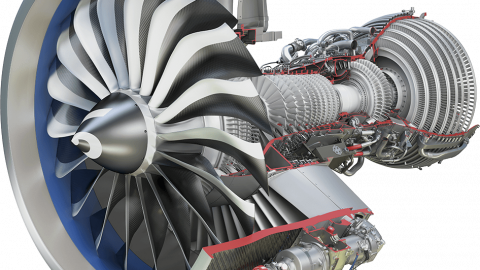
The engine is manufactured by 3D printing technology
For the aviation industry, accuracy requirements in component manufacturing and processing are extremely high. Therefore, to create a standard product, businesses in the industry often spend a lot of time, cost and manpower to strictly control the quality. However, this problem can be solved well thanks to 3D printing technology.
Compared to traditional mechanical part processing technology, 3D metal printing technology has more advantages and is suitable for mechanical manufacturing industry with high accuracy requirements, such as aviation industry:
Aircraft components are very complex shapes with load-bearing structure, thin sheets difficult to fabricate. If processed by conventional embryo cutting method, the amount of chip generated is very large, time consuming and energy consuming.
The alloys used to make components are also difficult to cut, especially titanium alloys with a high hardness that makes it difficult to process.
The production of manufactured parts is often small, so it cannot be manufactured in large quantities, and manufacturing costs are high.
With 3D metal printing technology, the production of components almost completely utilizes almost 100% of the raw metal powder. The shape of the parts manufactured by 3D printing technology is optimized so as to reduce the weight of components while ensuring the bearing capacity. Processing components is not affected by many different materials and is cheaper than investing in a whole line when processing according to the old methods.
According to CNN Business, 3D printers can help Boeing and Airbus quickly reduce huge backlog. However, with 3D printers, these aircraft manufacturers are also able to produce components with superior features than those manufactured by traditional methods.
“3D printing technology allows us to produce complex components that cannot be produced by conventional cutting tools,” said Grazia Vittadini, Airbus chief technology officer.
In Australia, scientists have also introduced new engines built by 3D printing technology. These engines are based on models of turbine engines from manufacturer Safran, France, specializing in supplying machines for Airbus and Boeing. The team of experts disassembled the old engine, then used the scanner to make the components.
“This is a disruptive technology. We have seen many applications of plastic and polymer materials,” said Ian Smith, a specialist at Monash University. “This approach allows aerospace companies. shorten the production cycle, because we are creating engines that are 3-4 times faster than normal, “said Simon Marriott, chief executive of Amaero Engineering.
In general, the application of 3D printing technology in production is a big step for the aviation industry. With many advantages, 3D printing technology is gradually replacing many traditional production and processing methods with significantly improved performance.
Productivity and Quality Office